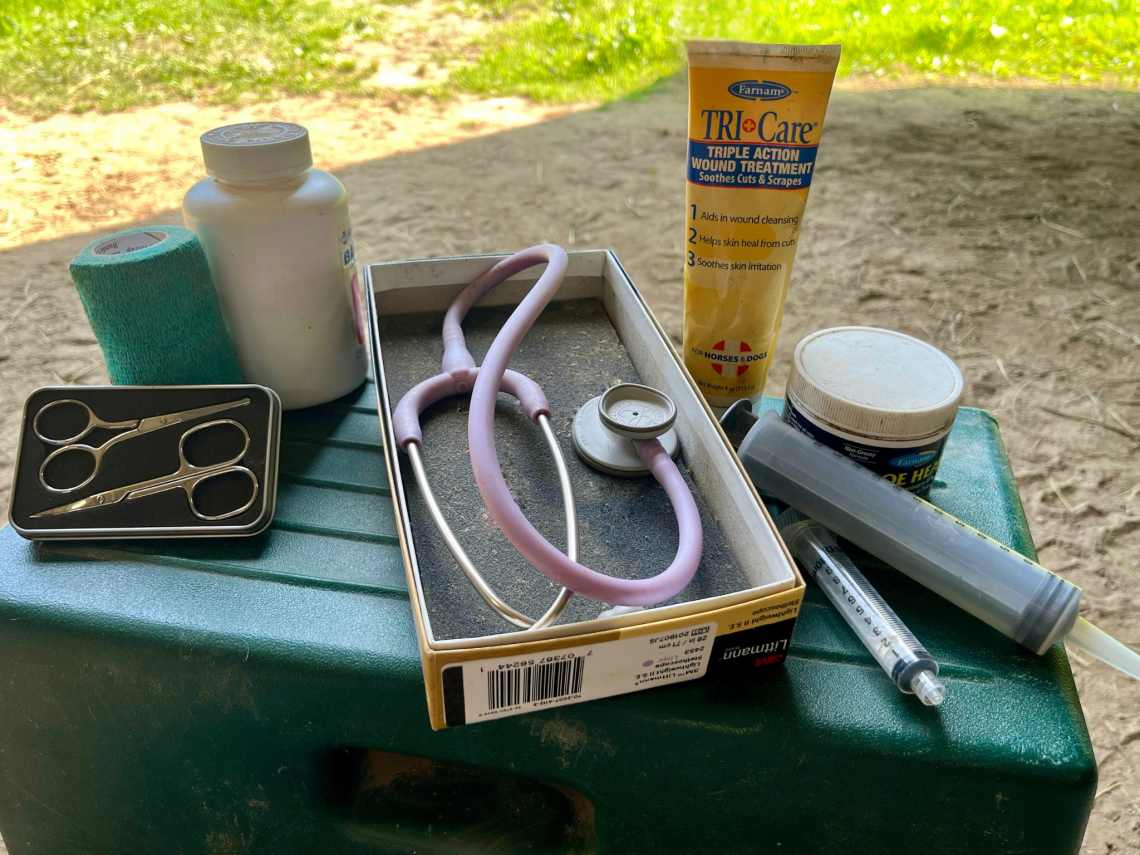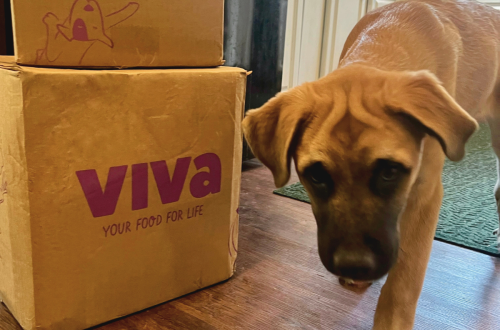When I first brought my horses to my property, my first aid kit was pretty slim. Over the years, it’s grown quite a bit and I now have favorite brands and products that I keep on hand at all times. Where there are truly countless items you could keep in your equine first aid kit, I’ve compiled a list of what have been the most-used items for me in day-to-day life on the farm. This should be plenty to get you a solid start, to which you can – and will – add over time.
1. Antimicrobial Wound Care
Horses are prone to cuts, scrapes, and other minor wounds that can become infected if not properly treated. There are tons of options when it comes to wound-cleaning sprays, ointments, and salves. I prefer to use Banixx for scratches and similar wounds. It’s easy to apply and effective. Another great option is Aloe Heal, which soothes the skin and promotes healing at the same time. Betadine scrub and a triple antibiotic ointment are two other wound-cleaning staples great to have on hand.
Most of these products, with the exception of Banixx, which can be a bit pricey, are inexpensive and easy to replace if you end up not using them for a while.
2. Stethoscope
Every barn should have a stethoscope for listening to gut sounds and taking your horse’s vitals. One word of advice: practice listening to your horse’s gut and heart when she’s feeling just fine! That way, if something sounds off, you’ll know what baseline sounds like.
You can get a decent stethoscope that’ll do the job and hold up to a little wear and tear for around $40.
3. Thermometer
Thermometers are another first aid staple used to monitor your horse’s vital signs if you suspect she’s sick or something is off. Again, take her temperature periodically when nothing’s wrong so you know what she generally runs.
You don’t need anything special here and can get a cheap one from your local drug store. Just make sure you label it so you don’t get it mixed up with thermometers you may use for humans!
4. Vetrap
Vetrap is a flexible, self-adhering bandage that is perfect for wrapping wounds or securing dressings. It provides support and protection without restricting movement. It’s easy to use and doesn’t require additional clips or fasteners. Vetrap is also useful for securing ice packs or other treatments that need to stay in place. It’s a versatile and essential item for any equine first aid kit and is generally inexpensive.
5. Gauze Pads
Gauze pads come in handy for cleaning wounds and applying pressure to stop bleeding. Have several sizes on hand so you’re prepared for any situation, big or small. These are another inexpensive staple that have a long shelf life, making them easy to keep stocked.
6. Tweezers
Tweezers are useful for removing splinters, ticks, and other small foreign objects from your horse’s skin. It’s important to keep them clean and sterile to avoid introducing infection. Choose tweezers with a fine tip for precision and a good grip to make the job easier.
7. Sterile Scissors
Sterile scissors are necessary for cutting bandages, gauze, and Vetrap to the desired size. They can also be used to trim hair around wounds to keep the area clean. Make sure your scissors are sharp and clean to prevent contamination. It’s a good idea to have a pair of blunt-tipped scissors as well, to avoid accidentally injuring your horse while cutting bandages close to his skin.
8. Clean Towels
Keep a few towels in your first aid kit, and wash them regularly to ensure they are ready to use when needed. They can be used for almost anything, including applying pressure to a bleeding wound and working as a makeshift bandage in an emergency.
9. Syringes
Always have a few oral syringes and a few different sizes of regular syringes with needles on hand in case you have to give medication, electrolytes, or even water in a pinch. While it’s crucial never to give injections unless instructed by a vet and you are confident in your ability, syringes can be used to draw up liquid medications like Banamine that can still be given orally without the needle. They can also be used to flush wounds or administer fluids.
10. Benadryl
Benadryl is great to have on hand for allergic reactions like itching and swelling. While serious situations will still warrant a call to your vet, Benadryl can help to manage symptoms until your vet can get to you. Ask your vet for the correct dosage for your horse.
11. Electrolytes
Have electrolytes on hand in case a horse becomes dehydrated or starts to show signs of “tying up.” They can be administered as a powder on top of feed or mixed with water and given in an oral syringe.
12. Medications from Your Vet
It’s not a bad idea to ask your vet to give you a tube or two of Banamine paste (you can also use liquid Banamine orally) and Bute just to have on hand in case of emergency. Banamine is often used to help make your horse more comfortable during a colic episode, while Bute is an anti-inflammatory medication used to manage mild pain.
If your horse is prone to severe allergic reactions, your vet might leave you with a corticosteroid like Dexamethasone that you can give orally. Keep these medications stored in a cool, dark area to prolong their shelf life.
Bottom Line: Start Small and Build As You Go
You don’t have to have every possible item that you might ever need to care for your horse the minute you bring her home. Instead, start with these must-have staples, then gradually add to your “collection” of supplies as you need them.






